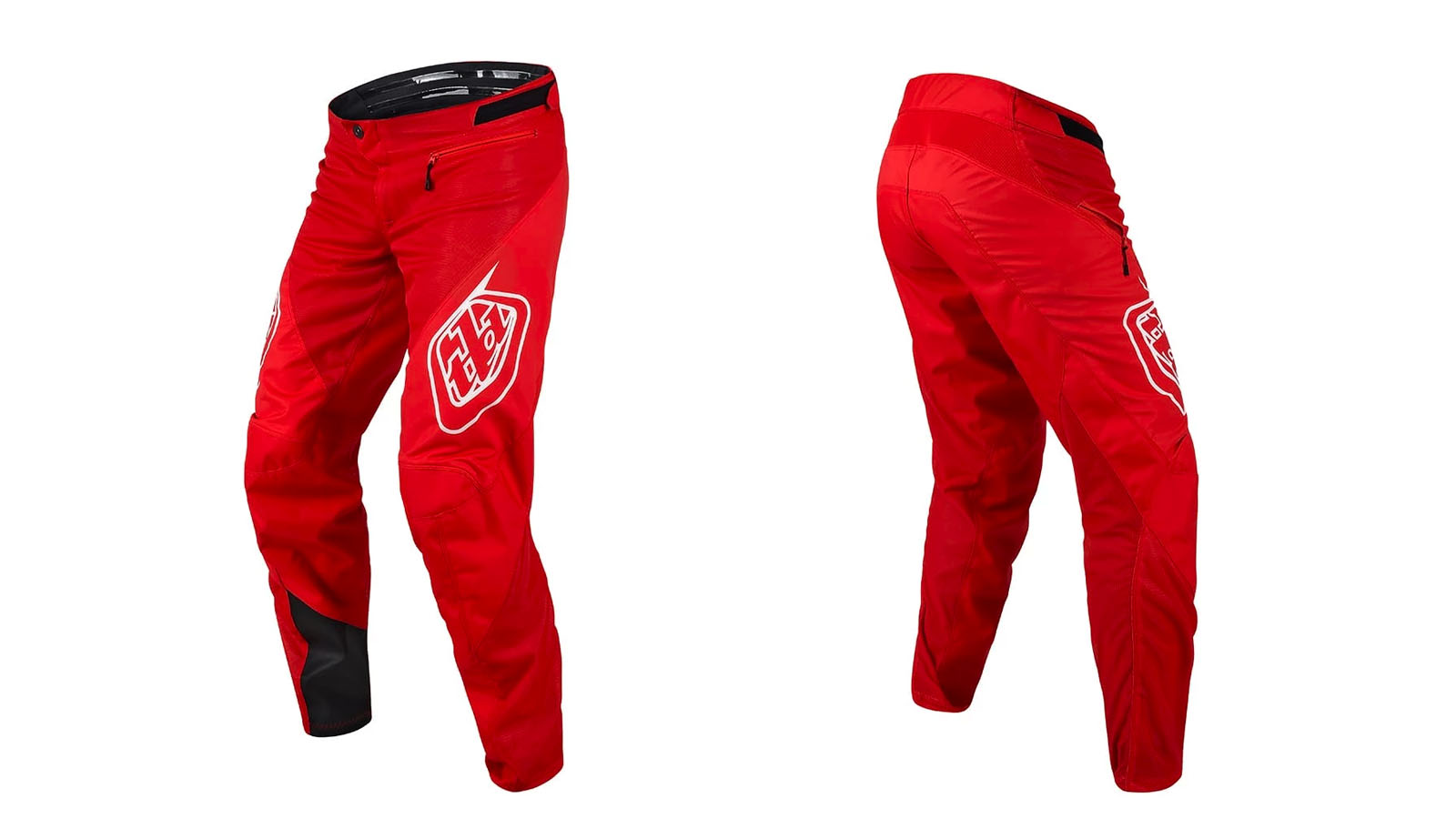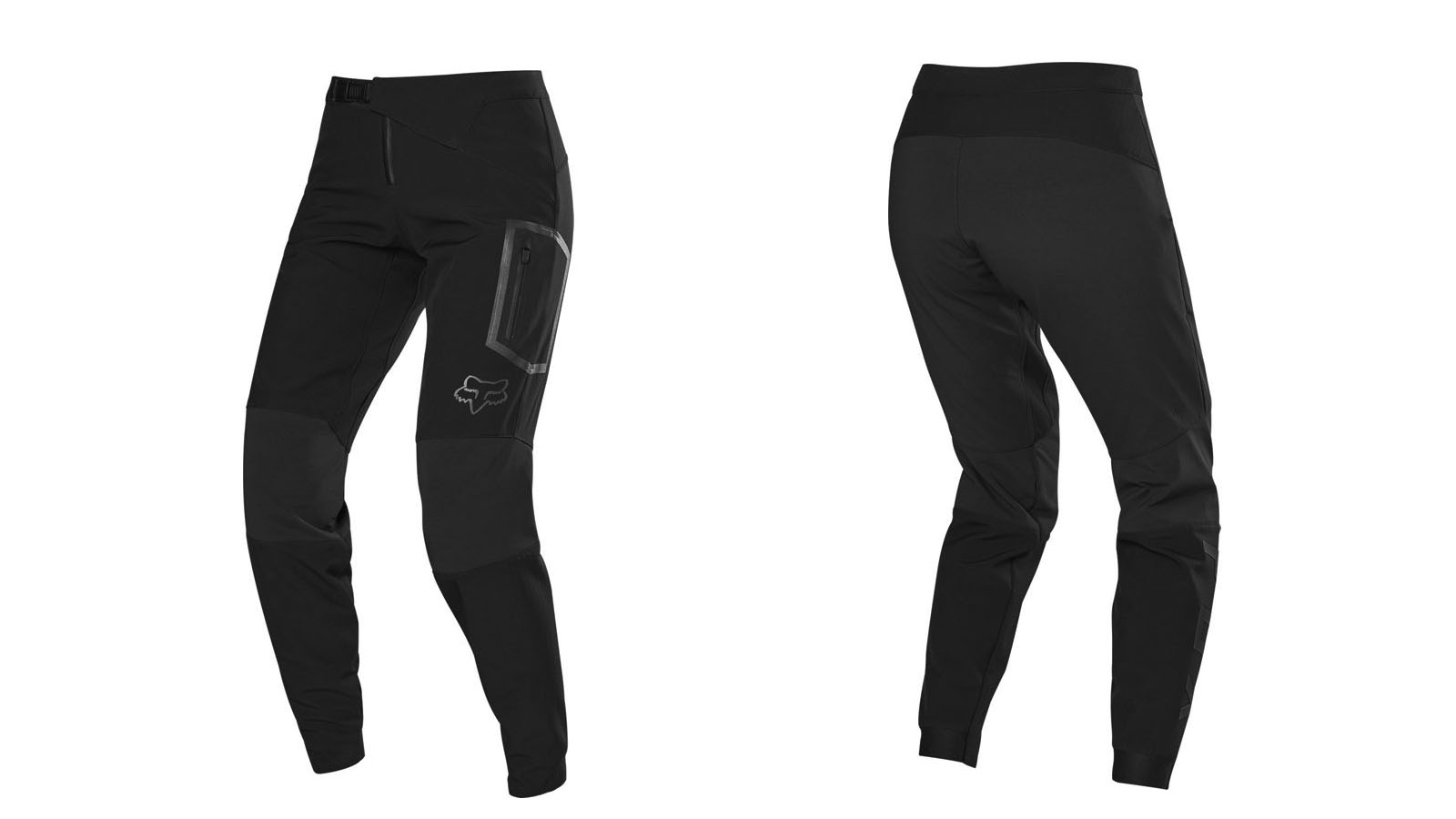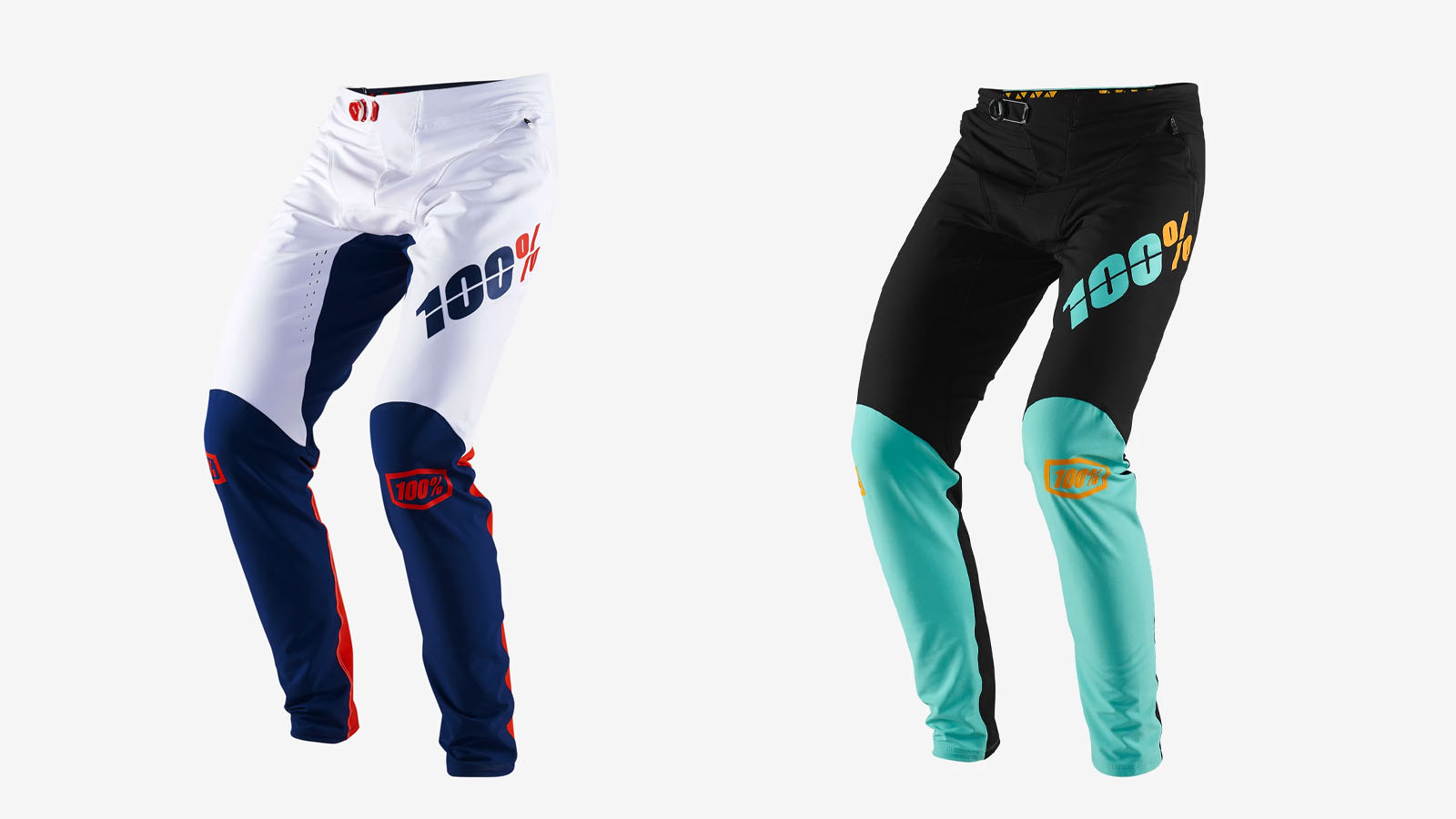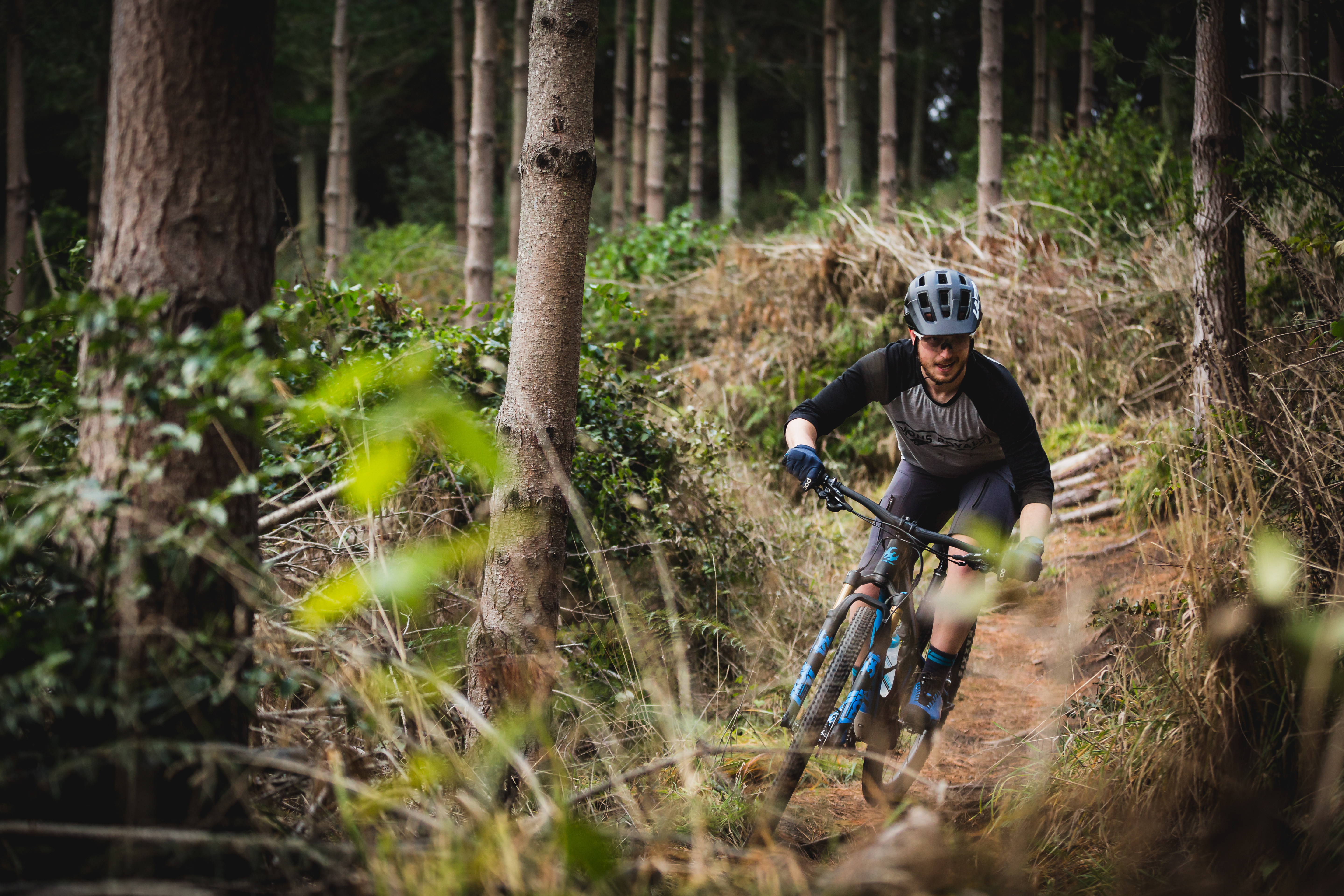Best mountain bike trousers
With advancements in fabric technology and tailoring, MTB trousers have radically improved over the past few years. We take a look at the best options for riders who prefer not to get their legs out

With advancements in fabric technology and tailoring, MTB trousers have gone from something reserved just for downhill racers into something you might now reach for on a cold and/or wet trail ride.
Gone are the days of bulky and thick pants that didn't breathe, now MTB pyjama pants are made from the same materials as baggy MTB shorts, with stretchy fabrics, and even feature vents. Brands have realised that a slimmer fit is less obtrusive, and can help to keep your knee pads in place, too.

Troy Lee Designs Sprint
Eco-friendly crash-proof pants
Made from a blend of Bluesign approved rough-and-tumble 600D polyester and spandex, the Troy Lee Designs Sprint trousers can survive an extended slide through the underbrush without pinching the back of your knee as you pedal. The knee and outside of the thigh are made of a tougher fabric still to stave off crash damage, and there is a mesh liner on the inside that creates a primitive slip layer and wicks sweat too.
The calves feature a few mesh panels for airflow, and the inside of the right ankle is reinforced with a sonic welded patch to prevent wear from your drivetrain. The fit is tapered with hook and loop adjusters at the hip, and there are good-sized zippered pockets to carry your essentials.

Fox Racing Defend Fire Pant
Lightly insulated pants to keep you riding through blustery weather
When the temperature drops and the weather leaves the trails a sloppy mess, a bit of extra protection is needed to keep you comfortable on your ride. The Defend Fire Pant is made from a water-resistant shell and also features a fleece lining to take the bite out of the cold.
The seat and knees are made from Cordura, so they won't be shredded after your first tumble, while the softshell material has plenty of flex built in to move with you on the bike. At the bottom, an elastic cuff prevents the tapered leg from creeping up as you pedal while a ratchet buckle and zippered fly keeps them from falling down as you descend.

Fox Flexair
Featherweight breezey trousers
Like Fox's Flexair garments, the long pants are designed to be lightweight and well ventilated. Made from the same material as the Flexair shorts, the feature laser-cut perforations on the front of the thighs, bum and knee, and the pants are cut slim, but with ample room underneath for heavy-duty pads.
Fox didn't add any extra abrasion-resistant material, or double reinforced panels on high-wear areas, however, the company did give the trousers a C6 eco-friendly DWR treatment to allow them to shrug off slashes and light rain. At the top, there is a ratchet-style closure which combines with a silicon band that runs the entire circumference of the waistband to keep your pants up — even when the pockets are loaded.

100% R-CORE-X DH
Painted on race pyjamas
It wouldn’t be a MTB trousers roundup without a set of fully-fledged pyjama pants, and the R-CORE-X DH Pants fit that bill. Like many of the other trousers here, they are made from a DWR-treated four-way stretch material, but what's really unique is the waist closure. Instead of a popper or ratchet system, the pants feature a BOA dial that literally allows you to reel-in the waist.
100% has taken a laser to the inseam and behind the knees, cutting vents to prevent these areas from getting overly funky. There's a zippered hand pocket on either side and stabilised inner pocket to store your phone. Be warned, the R-CORE-X DH Pants are skinny and those who aren't about the painted-on look need not apply.
Wait, why would I wear long pants?
It only takes one or two rides in cold temperatures trying to ride with leg warmers under knee pads to realise it's far from the best solution. Not only do they provide a bit of extra warmth, but MTB trousers also serve as the first line of defence from the muddy projectiles being flung off your wheels. When you arrive at the trailhead after a mucky ride, you can just peel off the muddy clothes rather than trying to scrub the lower portion of your legs before you get into the car.
Trousers also offer a first line of defence from gravel rash, fern burn and your pedals when you slip one over a techy feature or in a g-out.
1. Waterproof or non-waterproof
Just like jackets, there are distinct differences between waterproof and non-waterproof garments. While truly waterproof fabrics will keep the wet weather on the outside, the moisture-proof membranes are at a disadvantage in terms of breathability, feel 'crunchy' and usually don't have much in-built stretch.
If you live in a place where winter riding also requires a snorkel, waterproof trousers will be your best choice. Otherwise, we'd recommend their softshell cousins — they are considerably more comfortable and often have a DWR treatment to help light rain and splashes roll off the fabric.
2. Fabric choice
Yes we know we've just alluded to fabrics, but using the right textile in the right place can make or break a set of trousers. Look for lots of stretch fabric used throughout because if the materials aren't moving with you, they will bunch, bind, pinch and chafe.
3. Fit
While skinny jeans may not appeal to your fashion sense in the real world, you want riding trousers to be form-fitting as this will help keep your knee pads in place and prevent the trousers from flapping in the wind and catching on your saddle. We are not talking painted-on, but form-fitting. Also, look for articulated knees which will help the pants fit you better in the riding position.
4. Adjustments
Everybody is built differently, so adjustability is key to a good fit. Look for hook and loop adjustment at the waist as well as Velcro, snaps or zips around the ankle to make sure the lower cuff is snug around your leg.
5. Extras
Some riding trousers feature extra padding or abrasion-resistant materials around the knees, hips and shins, while others have a mesh liner that runs part of the way down the leg to create a slip plane. We are big fans of additional features like these that create a point of difference, but make sure they don't come at the cost of fit or comfort.

Born and bred in Colorado, and now based in Australia, Colin comes from a ski racing background and started riding as a way to stay fit through the summer months. His father, a former European pro, convinced him to join the Colorado State University collegiate cycling team, and he hasn't stopped since. It's not often he pins on a number nowadays, and you'll likely find him in search of flowy singletrack, gravel roads and hairpin corners. Colin has worked at Bikeradar and is a regular contributor to Australian Mountain Bike and Cyclist magazines.
Rides: BMC Team Machine SLR01, Trek Top Fuel 9, Ibis Ripley
